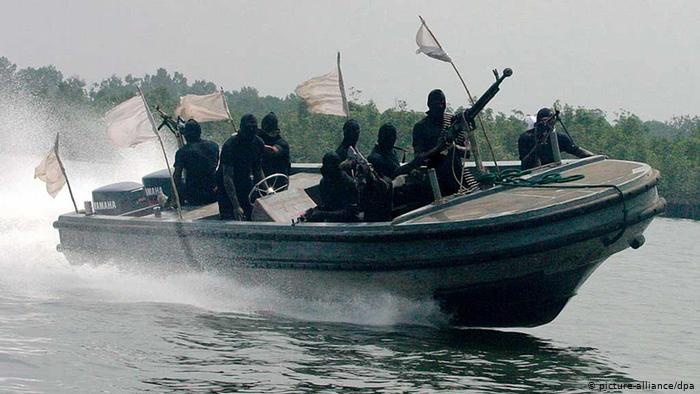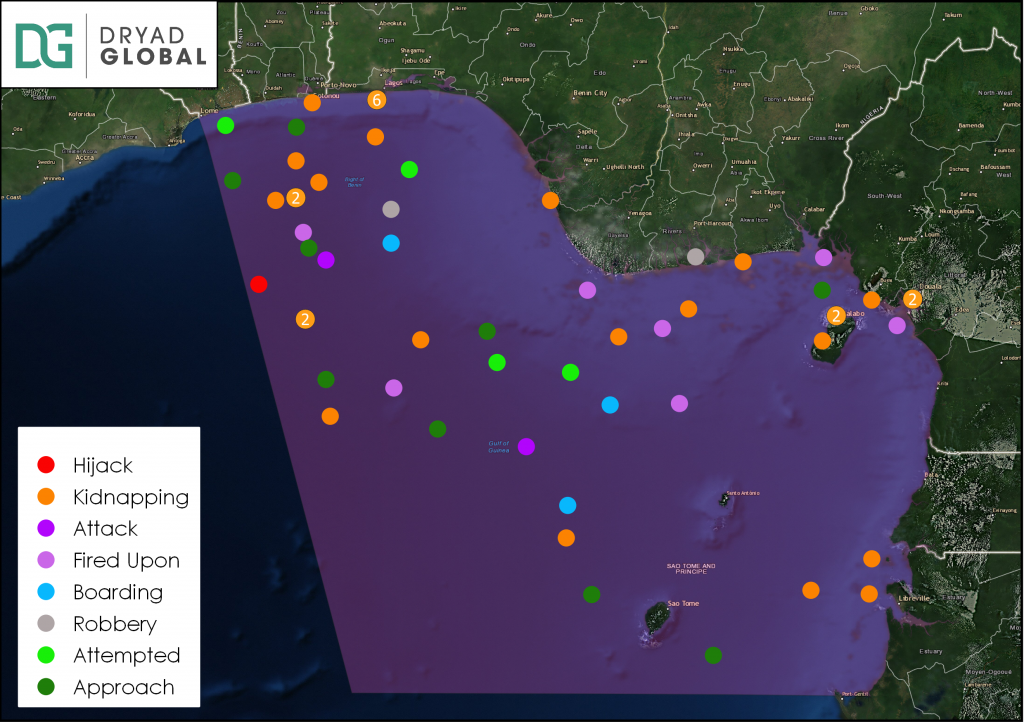
We asked Munro Anderson of Maritime Security firm Dryad Global what’s going on with piracy at the moment in relation to heavylift, general cargo and offshore vessels. Here’s what he had to say…
Where do the majority of piracy attacks take place that involve heavy lift/breakbulk/general cargo vessels?
By sheer volume of incidents the Nigerian EEZ remains the heartland of global piracy, however 2020 has seen the continuation of a demonstrable trend that sees an increase in incidents occurring beyond the Nigerian EEZ. Notably these incidents are almost exclusively incidents of serious maritime crime involving vessels being fired upon and kidnapping attempts.
With regard to the targeting of heavylift, breakbulk and general cargo, there remains a significant volume of such vessels targeted in the waters of the Southern Niger Delta, and the deep offshore areas of the Sao Tome Nigeria JDZ and Sao Tome EEZ. This is principally a confluence of volume of traffic inbound to the key trading areas combined with the locality of the pirates thus creating an area of potent risk.

Regarding the recent hijackings of a heavy load vessel and a general cargo vessel in GoG, did they have armed private security guards onboard?
It is understood that the vessels did not have armed security in place, the reasons for this are often down to expense but equally logistical challenges. Many companies remain unaware of the precise nature of the risk within the Gulf of Guinea and there is often a general perception that vessels drifting at 100+nm are considered safe given the volume of opportunistic vessels closer to shore.
The inverse is increasingly true with more and more vessels targeted within the deep offshore areas out to a distance of 200nm. This was reflected in the enhancement of the GoG HRA by within the JWC-025 in September this year. It is worth noting that since 2019 there have been 5 vessels under escort or with guards embarked that have been attacked resulting in the kidnap of crew. The reliability and professionalism of armed security within West Africa remains the preserve of host nations rather than the private sector. Thus there are also significant quality differences.
What happens to the crew once they are kidnapped?
The vast majority of captives are held within the Southern Niger Delta, particularly within Nigerian states such as Cross River, Akwa Ibom, Rivers and Bayelsa. The natural conditions of vast swamps and mangroves with extensive river networks afford a high degree of safety and security for criminal networks. Perpetrators are often held in large makeshift encampments however will occasionally move through locations depending upon both logistical constraints of the captors and those that are ultimately in charge of the negotiation. Conditions are very poor, with health issues vastly outweighing maltreatment as a risk of harm to captive personnel. The average time we see crews detained for is currently 29.5 days with considerable variance on either side of that. Ransom payments vary considerably but the market rate is currently assessed to be roughly $53,000 per person.
Why do you think there has been a recent increase in piracy attempts around the Gulf of Guinea?
It’s a common misconception to think that piracy has increased. Across a range of incident classifications from robberies, to approaches, the volume of incidents has actually declined. Thus far 2018 represented the year with the highest rates of piracy with a slight decline in 2019. Overall incidents have declined in recent years in line with a wider global trend.
However, within the realms of serious maritime crime including incidents of kidnap and indeed volumes of crews kidnapped the incidents have increased. The reasons for such an increase are complex. In the main the relative lack of counter-piracy resources and commitment on a regional scale, combined with the crucial onshore socio-economic factors that often see maritime communities impoverished due to a loss of critical livelihood, result in a potent mix that sees maritime communities turning to piracy and maritime crime.
Within the Niger Delta there is the added complexity of vast oil and gas development that has often resulted in resentment as communities feel isolated from the prosperity of such projects. There is a significant degree of lawlessness inclusive of community conflict and organised crime. Combined, these all serve to create the conditions in which piracy is both a viable way of living and is sustained.
What annual trends do you witness with piracy attempts? Are some areas busier at certain times of the year?
Within West Africa and more specifically the Gulf of Guinea there are a number of micro trends that are identifiable however the two most prominent macro trends, established over a 4yr+ timeframe are the increase in our of area attacks by Nigerian Pirate Action Groups (PAG’s), that is to say an increase in incidents beyond the Nigerian EEZ.
The second such trend is the significant uptick in incident volume in the months following the end of the SW Monsoon, which results in a sustained period of predictably favourable conditions for piracy offshore that are not present in the preceding months.
What measures are taken to prevent these attacks from happening?
A range of measures are available for all vessels operating within the region. These are succinctly covered within the industry best practise document BMP-West Africa. Within this document vessels are reminded of the importance of ensuring a well resourced and rehearsed Ship Security Plan.
Beyond this and often overlooked is the value of a comprehensive and independent risk assessment. Such an approach ensures that vessel masters, crews and commercial decision-makers are all appraised of the true nature of the risk as it is and not as it is perceived. This allows for effective decision making and preparation prior to transits of high-risk areas.
These attacks are not uncommon around Yemen and Somali waters, do you look here for lessons learned? And what are the main differences between East and West African Pirates?
A second common misconception is that such attacks are common on the East Coast of Africa. Indeed by numerical volume of incidents and severity the Indian Ocean area is the 4th most affected region behind the waters of West Africa, South East Asia and the Gulf of Mexico.
East Africa does however have a profound legacy of piracy which is important to understand when both seeking to combat and contextualise current and future piracy. Potentially the key difference is the mix of incident types and locations. Incidents within East Africa were predominantly deep offshore, at distances far greater than that seen within West Africa, this is principle the result of traffic patterns and density.
A further difference is the lack of vessel hijackings within West Africa compared with incidents in peak of Somali piracy.
Lastly a key difference is found in the responses of the international community. Within West Africa, there remains a low level (post-colonial) naval presence, mainly by Portugal, Italy and Spain. There is a comprehensive lack of international framework and naval coalition working to combat piracy whereas the Indian Ocean is home to a number of Combined Task Forces and Naval Missions that include internationally recognised and protected transit corridors and naval missions. This response has been notably lacking in West Africa, despite the high volumes of incidents.
What advice would you give to shipping companies that need to transit piracy prevalent waters for business?
It is vital that all vessels transiting or conducting operations within the region establish a sound understanding of the nature of risk to the vessel and crew with regard to the transit in question.
Noting that the majority of risk is within the offshore domain. This should be sought from an independent and impartial supplier of intelligence and not (as is often the case) from PMSC whose principal product is predicated on high risk. Seeking such a product allows for clarity of decision making, intelligent routing, and scaled and appropriate mitigation in the form of vessel hardening. Beyond this, vessels should ensure that they employ industry best practices at all times, inclusive of effective vessel hardening.
What is the biggest threat/risk in relation to piracy right now? And what solutions/measures work best?
Currently and numerically the highest threat to vessels trading within the wider West Africa region remains low level robbery. However within the Gulf of Guinea the most significant threat is from offshore attacks with the intent of kidnap for ransom. Thus far there have been 119 crew kidnapped from vessels within the Gulf of Guinea across 22 incidents in 2020.

